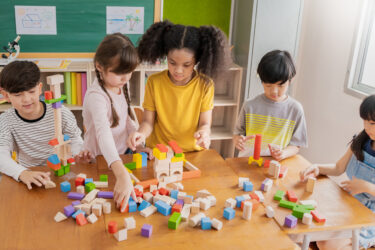Spring is budding all around us, and gardeners are itching to get into the dirt.
 As you head outside, don’t forget the kids, says the National Gardening Association. Toddlers are game for just about anything and kids 5 and older will love being involved in a season of sowing and reaping. Good planning, a little research on your part and hands-on experience for all build bonding with good, dirty fun. Dave Townsend, a Spring Hill dad, avid gardener and the mastermind behind the blog spot The Home Gardener, answers some of our questions on gardening with kids …
As you head outside, don’t forget the kids, says the National Gardening Association. Toddlers are game for just about anything and kids 5 and older will love being involved in a season of sowing and reaping. Good planning, a little research on your part and hands-on experience for all build bonding with good, dirty fun. Dave Townsend, a Spring Hill dad, avid gardener and the mastermind behind the blog spot The Home Gardener, answers some of our questions on gardening with kids …
What’s the right size for a vegetable garden children can work in?
The size of a garden varies greatly with a child’s age. When young, a simple plant in a pot is the grandest thing ever, but as kids grow older they want more space to grow their crops. For young children, try using a peat pot for seed starting that can be easily transplanted into the garden. A two-foot-by-two-foot bed is a good size for a 3- to 4-year-old.
Let them pick the vegetables they want to plant (with the idea that they get to eat what they grow) and help them to organize where to plant the seeds. Large seeds like watermelon, cucumber, sunflowers and squash work well for small hands. Smaller seeds can be broadcast over the ground and thinned as needed. As they grow older, enlarge your children’s gardening space or share the whole garden with them. Let their rate of interest help determine the size of the plot they garden.
Do kids require their own set of supplies?
I wouldn’t say that kids absolutely require their own tools, but having their own set definitely goes a long way toward getting them involved. Smaller handled spades for smaller hands make digging in the dirt a whole lot more fun. My daughter will run all over the place with her shovel just to dig a little in the dirt.
Providing a good set of tools makes a great way to teach them how to take care of what they own. At the end of each gardening time the child should put his tools away. If you are just starting out with your child, get a small spade, a small cultivator (the claw thing), a pail and maybe a rake. Little wheelbarrows are available now for kids that my daughter has had her eyes on since last summer.
Do you recommend starting a daily garden routine with children?
Routines are great for kids. They function better when they know what is going to happen ahead of time, so it makes sense that a routine will help them garden. Having a set time where you take them outside for “gardening time” is a great idea. When the weather is suitable, we spend as much time as we can outside. The key is not to make gardening into a chore that needs to be done but rather a fun event that everyone looks forward to doing.
What are some garden chores for the youngest children to do?
Between the ages of 2 and 3, children can start doing simple things like planting bulbs, watering plants and even a little weed pulling. Just make sure that you teach the child to ask, “Is this a weed?” before they pull. Otherwise, your daylillies may go the way of the crabgrass. Fall bulb planting is great. The gardening parent can dig the hole and the child can drop the bulb in the hole with the “pointy end” up. They will forget about the bulbs over the winter then be amazed in the spring when they realize that they planted those pretty yellow daffodils!
When the garden begins bearing fruit, the little gardeners can harvest. My daughter’s favorite fruit of the garden last summer were the cherry tomatoes. They almost didn’t make it inside! Squash is a good choice, too, since they are easy to pick and need picking often. Teach children about compost and they can help you dispose of compostable materials in the house. Never discourage your child from attempting anything reasonable!
Do you agree that children learn best when they can be hands-on?
You can’t replace hands-on experience. Children don’t want to sit around to be lectured, they want to be active. Getting them moving around the garden, exploring and learning as they go, is an irreplaceable education. They end up creating a memory to associate with the activity which I believe is superior to a sit-down lecture.
Adults understand gardening activities but children starting out do not.
Do you recommend orienting them verbally, visually or both?
A combination of both is perfect. I recommend being out in the garden with your child, teaching as you go. Every little kid’s favorite question is “Why?” and they will ask it a lot! It’s a perfect opportunity to give them plenty of information without a fear of burying them with it. When you are in the garden, explain what you are doing and why. Children are sponges that soak up information and often surprise you with how much they can absorb.
What’s the most important thing that can happen when parents garden with their kids?
Above all, the two most important things about gardening with children is that they learn to enjoy gardening and their time with you!
Dave Townsend is a music teacher-turned-stay-at-home-dad and an avid gardener who writes about his gardening experiences at The Home Garden (http://thehomegarden.blogspot.com).
After purchasing his home in Spring Hill he began the process of turning the blank landscape into a peaceful and beautiful garden for his family.
He enjoys writing about the garden, plant propagation and other issues related to home gardening.




